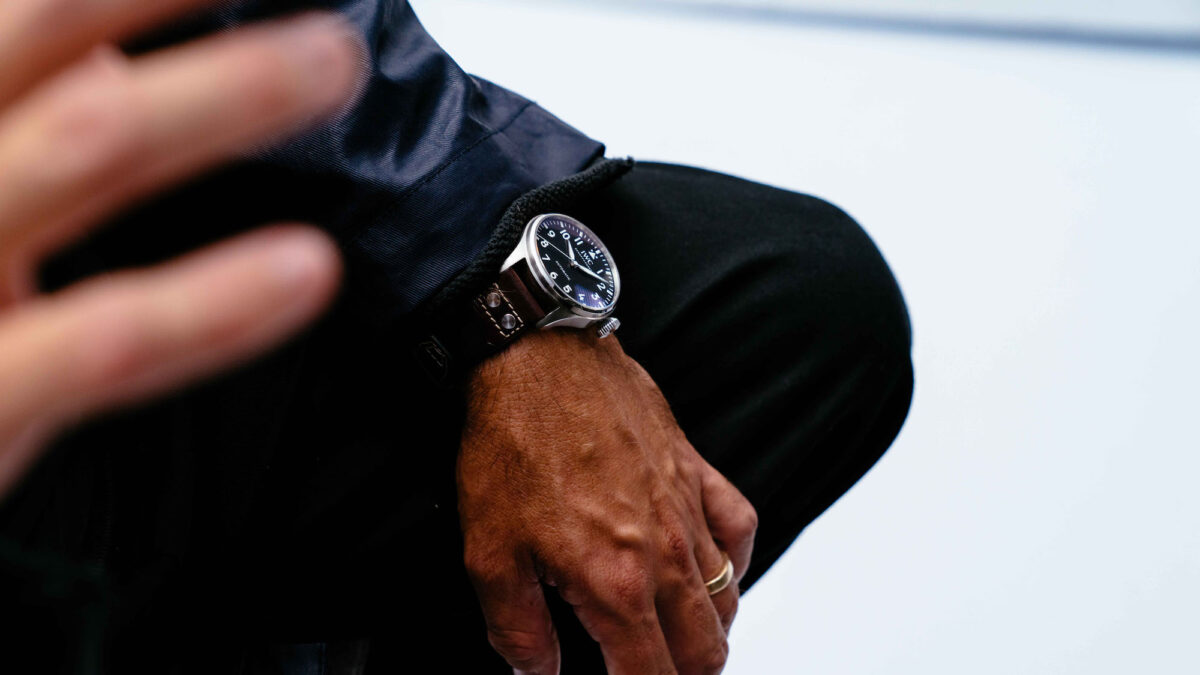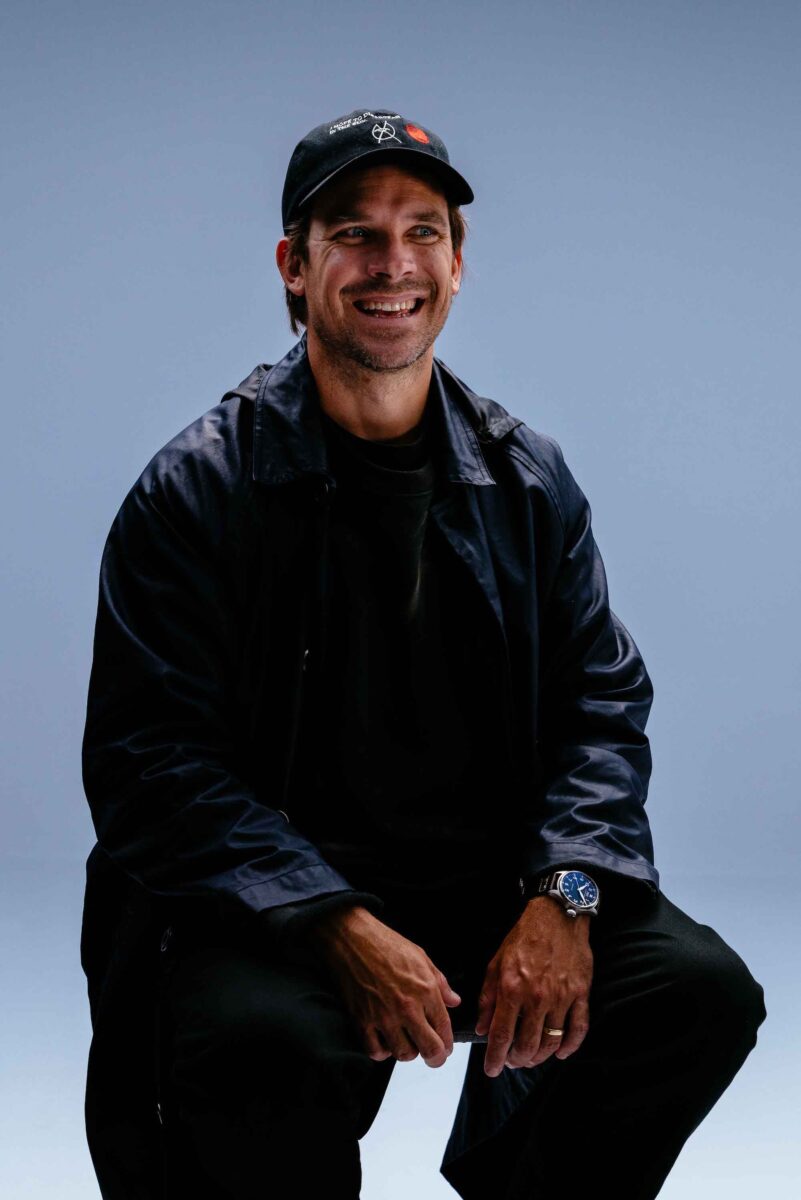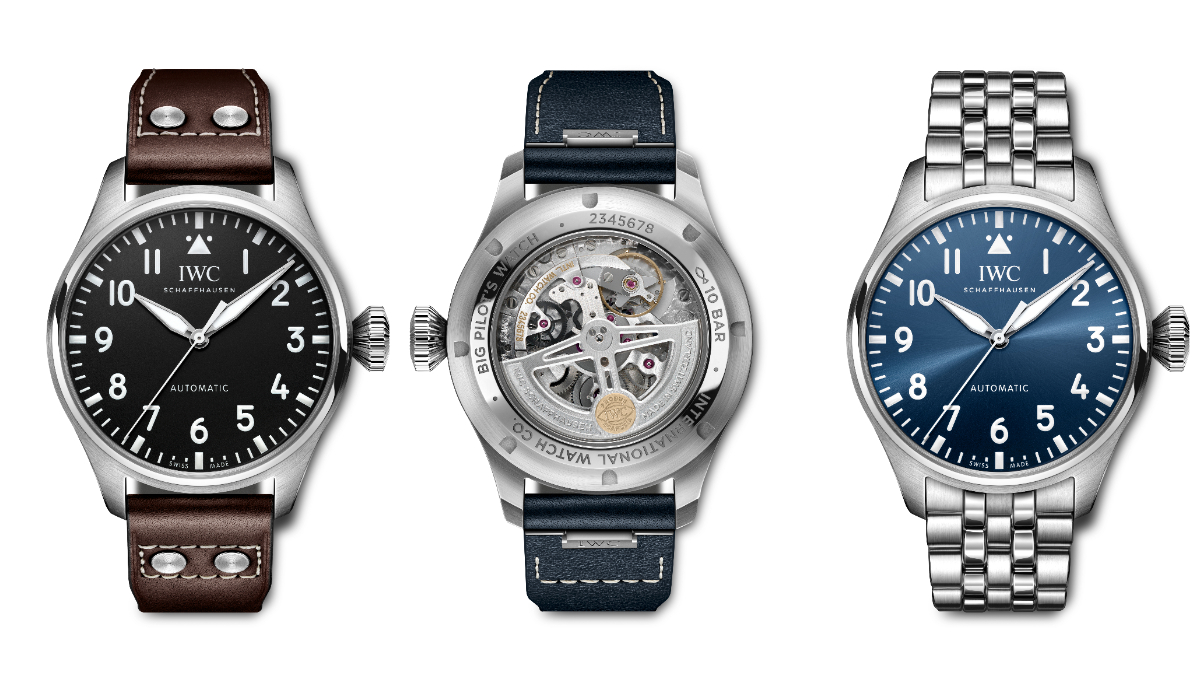
The following article was produced in partnership with IWC Schaffhausen.
Hayden Cox shaped his first surfboard at just 15 years old while completing work experience in Mona Vale, on Sydney’s pristine Northern Beaches.
At the time he was just having a little fun, but little did he realise it set off a fire inside him. Within seven years he’d open his first warehouse and later become one of Australia’s most awarded surfboard designers.
“I just really enjoyed the process of building something with my hands and the thought and design that goes into every step along the way,” he tells DMARGE. “I just kind of kept on building board after board after that.”
Cox soon became the talk of the local surfing community, with requests piling in from local surfers, schoolmates and even teachers. Today his surfboards are sold in over 70 countries. Having built the brand over two decades, naturally, his designs have matured.
“There’s a cross between the art and the engineering and the science behind building a board and the manufacturing process.”
And he means it. Cox is known for building some of the most technical surfboards in the world.
That desire to disrupt the industry for him began young. “I opened my first factory when I was 22 years old and that’s when I really took full ownership of building a surfboard from start to finish,” he says. “That allowed me to not only hone my skills as a craftsman but also start to innovate and think about different ways to build a board.”
Before long, Cox took his innovative manner straight down the centre of the board – literally.
“I was a couple of years in on having a factory and I came up with a concept to replace the wooden stringer down the centre of the board and put this parabolic carbon fibre frame which is now known as FutureFlex,” he says.
“That innovation changed the feeling of how the board felt under your feet. It was really lively, super responsive yet it was still able to be applied to a custom surfboard and it didn’t deviate too far from the typical process of how to build a board… [It was] quite different but at the same time, I could still build that in the same factory.”
The concept wasn’t taken too lightly. While there may have been some minor hesitation among older, more die-hard surfers, the rest took to the design with keen eyes. It wasn’t long before his boards became highly sought after.
What Cox enjoys most about his line of work is that it takes equal parts work and play to get things right. “For me, learning is all about being hands-on; not only in the factory building the product myself or working with my team to build it but also going out and surfing on it,” he says.
And it’s not a quick turnaround. Sometimes a single design can take years to manufacture.
“I might typically take two or three years to really refine an idea,” he says. “All making sure the parts of the construction and the shape of the board and making sure they blend together are really nice before we go to market.”
So how does one of Australia’s most innovative designers come up with his ideas?
“For myself, when it comes to designing things, the material choices is where I really like to start. It’s a foundation on thinking innovatively on how you can actually build a product,” he says.
“Sometimes you need to challenge the status quo of an industry by working with a different material and challenging the way that material could be applied. I think that’s really what happens with a collaboration.”
For Cox, customisation is the key to a great board. But when your work is sought after globally, it can be hard to maintain that customisation process, he admits. That’s why he was an early adopter of technology.
On his website, Haydenshapes, surfers can design their own custom boards and watch them come to life online. “I really love to explore the different ways we can build a board that has high performance without compromising the key details that make the board feel great… The idea of customising surfboards is going to live on and it’ll always be a major part of what I do in the industry.”
Cox says the ability to customize also helps surfers connect to their boards on a deeper level. When a surfer is excited about their custom-designed surfboard, it makes them want to be a better surfer, he adds.
While Cox loves to challenge the status quo with innovation, he also respects tradition. Like many successful men before him, he appreciates the art of simplicity.
“When it comes to my personal taste, I feel like simplicity is something that I look for. I really do like the dial on the Big Pilot 43, to me it’s something that really stands out visually yet I don’t feel out of place when I wear it,” he says.
“I feel like some of the best designs are more simple in nature.”
Discover the IWC Schaffhausen Big Pilot’s Watch 43 collection here.
The post Surfboard Designer Hayden Cox Reveals The Secret To Combining Innovation & Design appeared first on DMARGE.




0 Commentaires